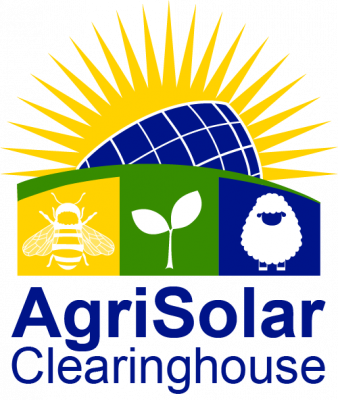This report describes the design and construction of a solar photovoltaic food dryer. The hybrid solar-energy dryer uses PV panels to power the heating element coil and charging battery which includes a storage energy system used to study drying behavior. Solar-powered dryers could be effective technologies to use in future agrisolar operations that include grain or other crops.
This report describes the efficacy of a solar-powered cooler in Kenya. In addition to keeping the produce cooler, it also maintains the carbon dioxide and oxygen balance and reduces spoilage. These conclusions were drawn from variations of storage conditions and climate conditions of the beans in the study.
This NASA report describes a solar-powered refrigeration system that uses a variable speed, direct current (DC) vapor compression cooling system, connected to a solar photovoltaic panel. The system, patented by NASA, eliminates reliance on an electric grid, requires no batteries and stores thermal energy for efficient use when sunlight is absent. The system is specifically ideal for off-grid applications, and works well for vaccine coolers and solar-ice makers, among other things. Some of the contexts of this system’s application has been found in various agrisolar operations.
This report describes a food storage structure that includes a solar-powered, evaporative cooler. The storage structure was designed and developed to increase the shelf life of fresh fruits and vegetables. The report shows that this is made possible by solar-powered exhaust fans and a cooling pump that provides water to the pads. These applications may be useful when agrisolar operations are located in dry or desert conditions.
This report describes a cold-storage structure that employs a solar-powered cooler to reduce food spoilage after harvest. The results of this project show that through low-cost cold rooms powered by solar energy, farmers can extend shelf life of fruits and vegetables which ultimately increases revenue for smallholder farms and their bargaining power in the marketplace.
This article discusses the effectiveness of solar PV in a twin-circuit DC milk chiller in rural India. The study measured average amounts of ice formed per day for a period of eighteen days out of each season as well as the climactic conditions that variations of the refrigerants operated under. The system ultimately operates with less power during conditions that include automated temperature-based shut offs based on milk temperature. This allows energy to be utilized elsewhere when shut-off systems are engaged.
This paper presents a novel 3D agrovoltaic modelling tool developed in python, which enables technical and economical evaluation of potential agrovoltaic designs. The study shows that agrivoltaic installations can be utilized to further decarbonize the agriculture sector while also providing new market opportunities for PV installers and developers.
This poster illustrates the performance of several crops under a solar photovoltaic panel, including pears. The performance of this agrisolar operation is provided in detail in the poster shown, including details regarding erosion and flooding risk, as well as crop suitability and cropping area.
This best practices report includes many orchardvoltaic case studies in Europe, including: Albers raspberry farm in the Netherlands, strawberry greenhouses in France, citrus fruit and aromatic herbs grown in PV greenhouses in France as well as land regeneration and an animal husbandry agrisolar project in Hauet-Garonne, France. These projects presented in this report can be useful in the development of similar agrisolar projects in the future.
This article describes a planned three-year study (2019-2022) to understand the effect of shading below solar panels in apple production. This study includes tree water status, irrigation requirements, and fruit growth. The first-year results show that the presence of solar panels on top of apple trees improved their water status with less water applied in the period prior to harvest without any negative effects in fruit growth rates than with trees that had no solar panels.
